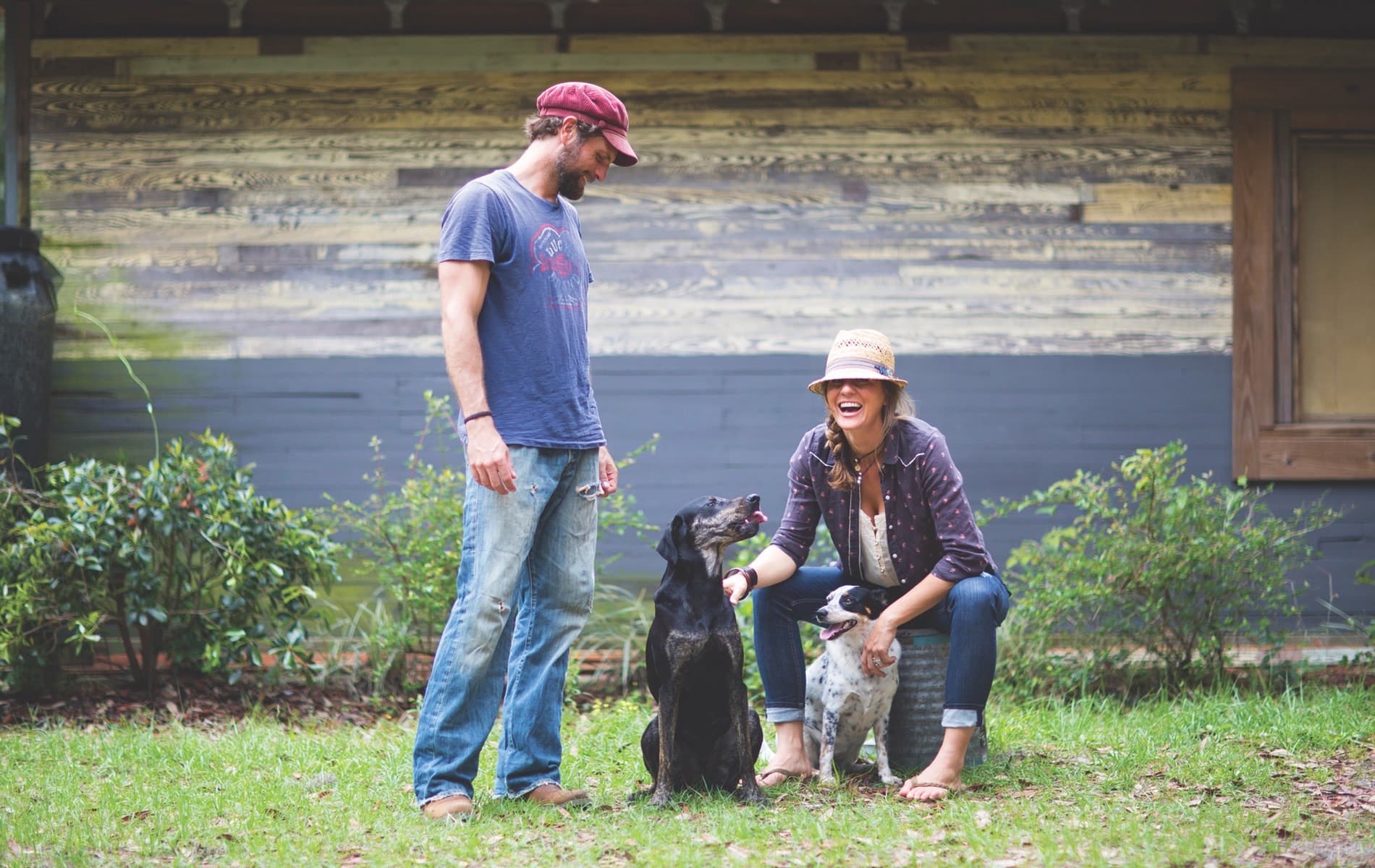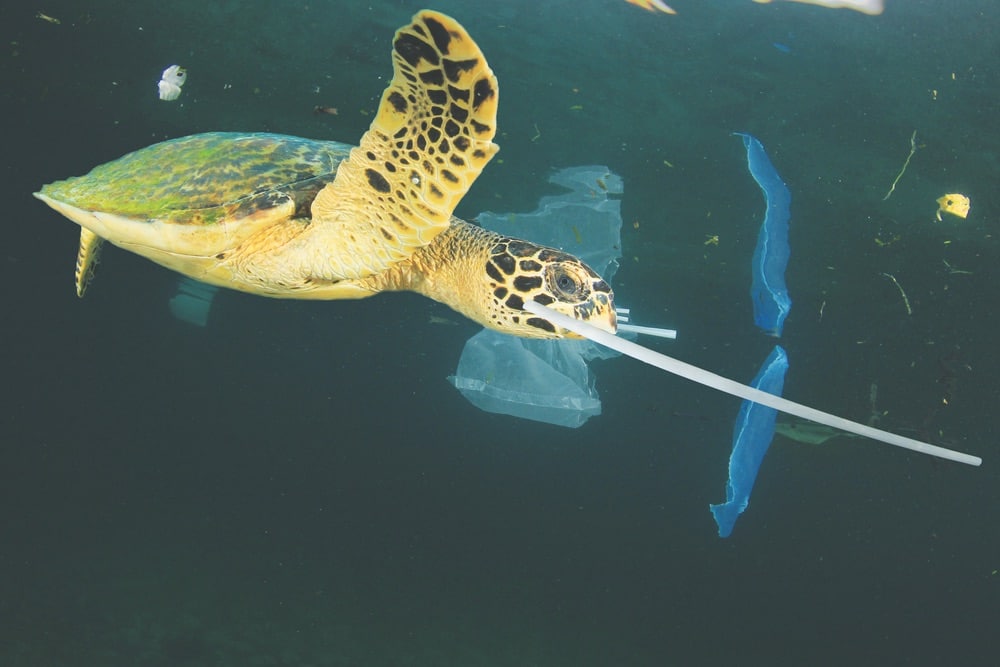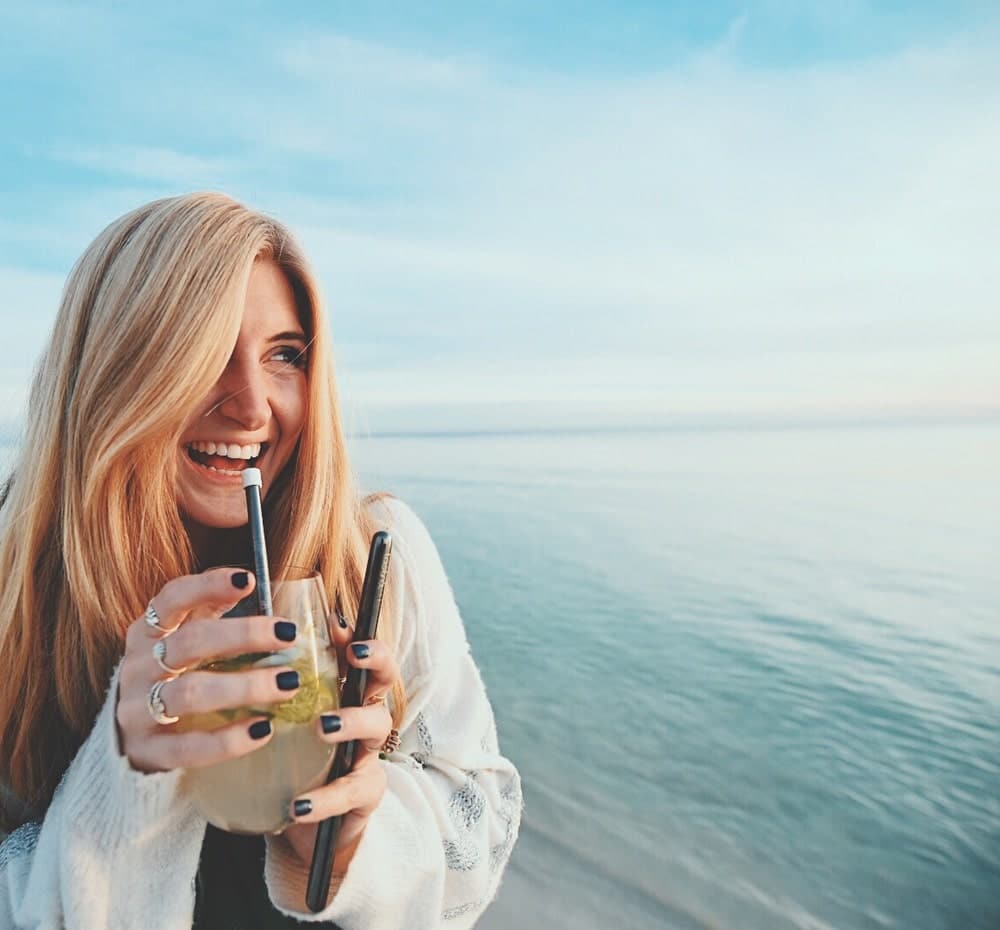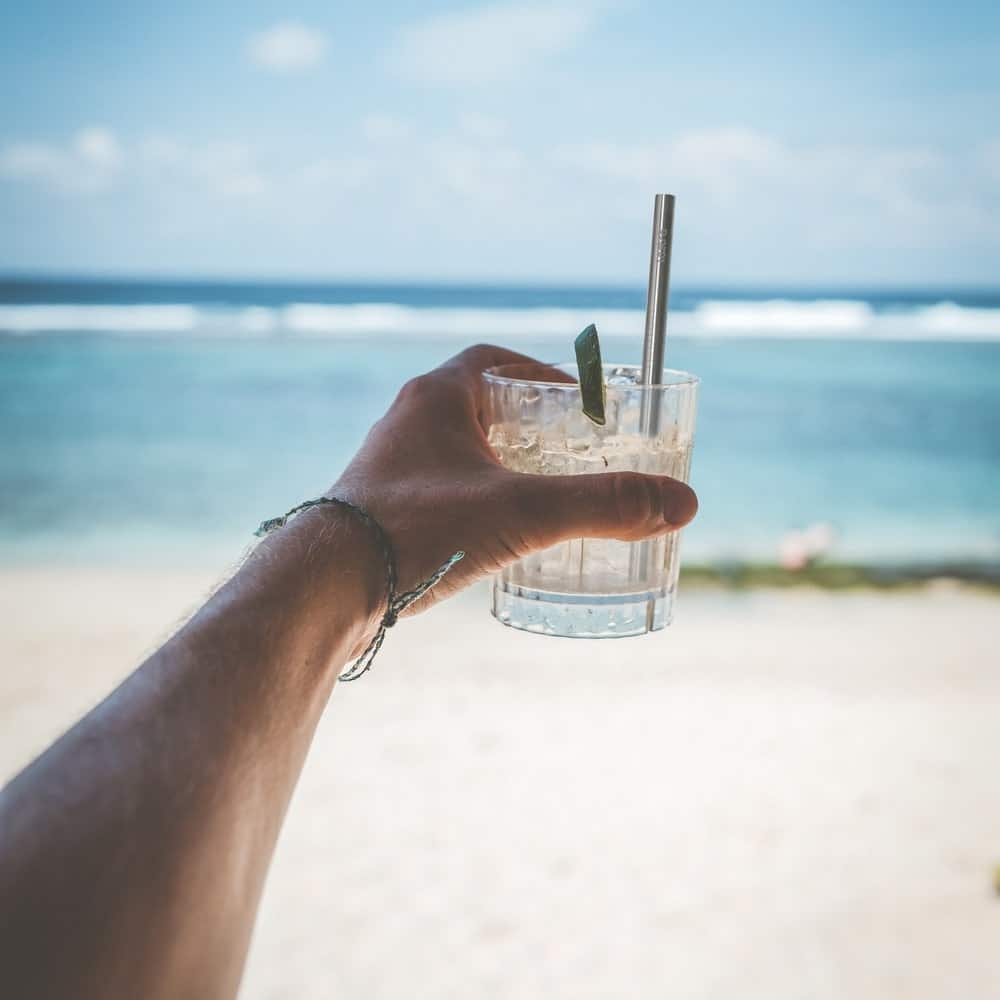
vie-magazine-lastra-life-hero-min
Lastrå founder Arix Zalace and Jenifer Kuntz with their dogs, Japhy and Kali | Photo by Sean Murphy
The Final Straw
The Future Is Not Disposable
By Arix Zalace | Photography courtesy of Lastrå
As we waited patiently, Jen and I made our predictions. “I think we are going to get six,” Jen said to me with confidence. “Six! That is a lot for one meal,” I replied. “I am going to go with three, maybe four.” We had just sat down at our table. While walking into the restaurant, we both agreed not to stop the wait staff from handing us plastic straws during our meal. The rule was simple. Do not discourage them in any way, regardless of how many straws we have already received. It was an experiment I had been conducting at a variety of restaurants; this particular restaurant was a nice one, so I anticipated the number would be low.
After ten minutes, the waitress took our drink orders. Jen asked for hot water with lemon, and I ordered a margarita on the rocks. The waitress strolled back to the table with the drinks and a glass of water for each of us. As she set the glasses on the table, my eyes widened with disbelief. There were five small beverage straws in my margarita and three in Jen’s hot water. That was eight straws, already more than either of us had predicted. Next, our server set the glasses of water on the table. Beside each, she placed another straw. We were up to ten straws already.
By the time our check came, a total of seventeen plastic straws were on our table. As I watched the waitress clear it, I noticed she discarded the drinking straws with everything else even though some were still wrapped in paper.

Plastic waste often ends up in streams, rivers, and oceans where it threatens the health and safety of wildlife, ecosystems, and humans.
This particular “research dinner” took place about six months before banning plastic straws became a significant environmental movement in 2018. It quickly grew into a worldwide movement when a YouTube video showing a group of biologists pulling a plastic straw from the nostril of a bleeding sea turtle went viral. The video marked a real turning point in the public’s perception of disposable plastics. Finally, there was an emotional connection between our daily habits and the harm they were causing. Governments small and large jumped on the bandwagon, as did multinational corporations like Disney, Starbucks, and McDonald’s, to name a few. Cities, states, and even entire countries instituted plastic straw bans.
While it was nice to see real attention given to the problems associated with disposable plastics, this was not a new concept for me. I have been a surfer and an environmental conservationist my entire life. Single-use disposable plastics are a problem that my friends and I have been aware of for well over a decade—and the problem is getting worse. A big part of being an avid surfer is exploration and adventure. We travel the globe and the oceans looking for perfect waves. These journeys often take us to extremely remote places—places where we are the only people. As far back as the late 1990s, I began noticing more and more plastic trash floating in the water and collecting on the beaches of uninhabited islands and remote surf spots. It was alarming, to say the least.
As far back as the late 1990s, I began noticing more and more plastic trash floating in the water and collecting on the beaches of uninhabited islands and remote surf spots. It was alarming, to say the least.
The straw awakening of 2018 was long overdue. It made sense that the plastic straw would be the proverbial shot over the bow, the canary in the coal mine that would finally begin a global conversation about disposable plastics and their effects on the environment. We’ve all used them. They are not confined to any socioeconomic class. Plastic straws are as commonplace at fine dining restaurants as they are at dive bars. Many who watched the disturbing video of the sea turtle felt an immediate connection and a twinge of guilt. It makes sense that the plastic straw would be the straw that finally broke the camel’s back.
Chefs and foodies the world over have become more conscious of what they are putting on their plates and into their mouths. Organic, local, free-range, wildcrafted, heirloom, all-natural; these are all terms no longer foreign or confusing to consumers. They have become definitive of the awareness consumers have about where their food comes from. It is important to us, and it matters almost as much as how the food will taste. With that in mind, it is logical that the next step in this culinary evolution would be for consumers to take note of what happens after they finish their meal. What affects will a dining experience have on the environment—on the planet—once they leave the table?
While plastic straws might seem like a minuscule part of the overall global plastics problem, there are several things to keep in mind. In America alone, hundreds of millions of plastic straws are used and discarded daily. These straws are too small for a recycling system to deal with effectively, and the majority end up falling through the cracks. That is, if they even make it into the recycling system. Many clog municipal sewer systems, rivers, and lakes and eventually end up in the environment or the oceans. Plastic straws are among the top ten items found during beach cleanups conducted globally.

Lastrå metal straws are designed to be stylish, easy to clean, and most of all, long lasting, thereby helping to reduce plastic waste.
This information is just the tip of the iceberg. Even though it takes hundreds of years for plastics to decompose, they do break apart into smaller pieces long before this. Scientists have learned that microplastics (MPs) are quickly becoming the biggest potential threat not only to the environment but also to human health. Microplastics are defined as any piece of plastic smaller than five millimeters found in the environment. What’s begun to alarm scientists more than the MPs themselves are the organic contaminants that stick to them. MPs act like magnets for PCBs, pesticides, flame retardants, and many other known hormone disruptors. In recent years, studies have shown that microplastics are starting to show up everywhere, and if you think this does not affect you, think again. Microplastics have been found in drinking water, table salt, in the tissue of fish and shellfish, and, yes, even in beer. They are getting into the food chain, so the choices that we make when we dine today do inevitably affect what we will be eating in the future.
This was my mind-set two and a half years ago when I first began designing Lastrå, the product I was doing “research dinners” for. I wanted to develop a product to help educate consumers of the growing plastic pollution problem—something that would help get the conversation started. The plastic straw was a perfect starting point. Jen wanted to eliminate plastic straws from her business (an organic juice bar and café), so during that time, we began experimenting with paper straws only to learn that many people did not like the texture, the taste, or the sogginess that would ensue after a short time.
It was at this point that I started manufacturing stainless steel straws and began to document how people responded to them. I asked a lot of questions to learn what could bring about lasting change in their habits, and in talking with thousands of people, I began to understand what they liked and disliked about stainless steel straws. From this knowledge, I designed and built prototypes, refining each new version of Lastrå. I wanted to create something that was fully functional, easy to use, and easy to carry and store—but also something that people would want to carry. The product had to be beautiful enough and unique enough that others would inquire about it. I wanted people to show it off. I soon realized that what I wanted to create was a conversation piece.

After three years of research, design, and testing, Lastrå came into being. I had created a complete reusable straw set that was not much larger than a single straw. Three straws were nested one inside of the other and a cleaning brush was built into the housing that held the set together: it was compact, sanitary, and most important, elegant. The stainless steel set was also made to last a lifetime. I took the prototypes of the final design and showed them to others to see how they interacted with these sets. There was curiosity and excitement and, as one man told me, “a feeling of satisfaction.” I realized something at that moment. What is often missing in our disposable culture is the pure satisfaction you get from a well-made, well-designed product. The fact that something as simple as a straw set could bring satisfaction and spark conversation meant, for me, that I had achieved my goal.
Since the release of Lastrå at the beginning of 2019, we have fostered relationships with companies and stores big and small. We are honored to be featured by large companies like Wild Birds Unlimited and Caesars Entertainment, but learning about the programs and steps these companies are taking to help create a more sustainable planet is even more exciting.
Lastrå will be launching on Food52.com this month. We are also collaborating with communities around the country to create programs that help them become plastic-straw-free, start the conversation about single-use-plastics, and even generate revenues for the communities. This is the reason Lastrå was invented—to start the conversation.
The conversation about disposable plastics has begun, and it will take all of us to keep going and find the best solutions. For me, environmental conservation has never been about saving the planet; the planet will carry on without us. It has always been about saving ourselves.
The future is not disposable.
— V —
Visit Lastra.life to learn more or order your Lastrå products today.
Share This Story!
KEEP UP WITH THE LATEST STORIES FROM VIE
















































































































































